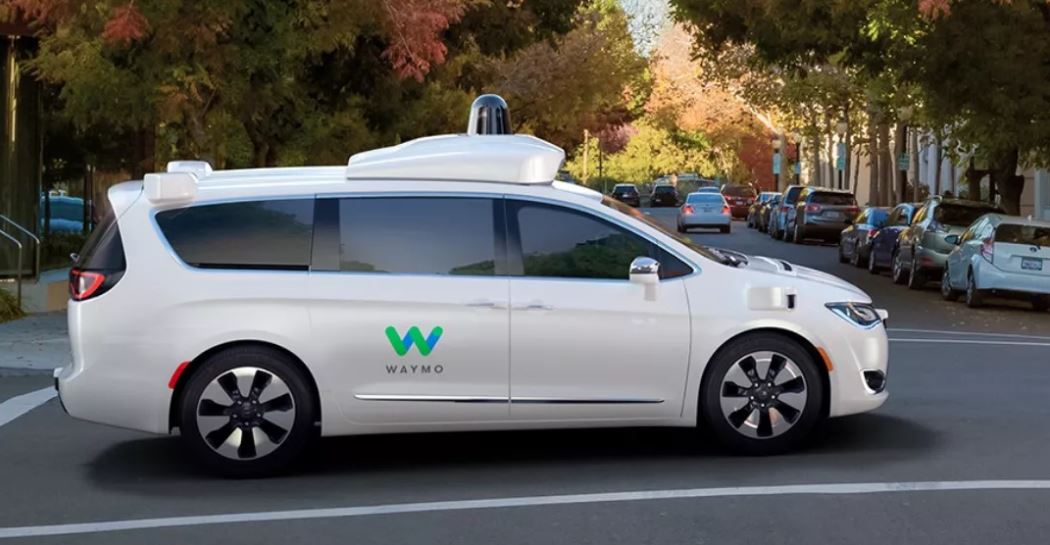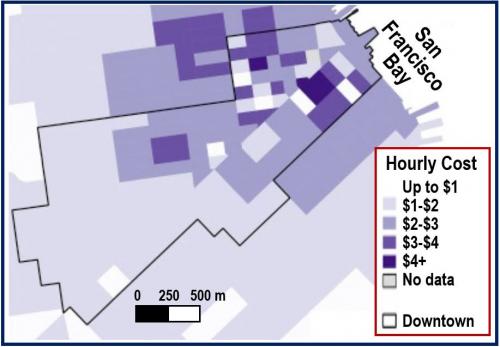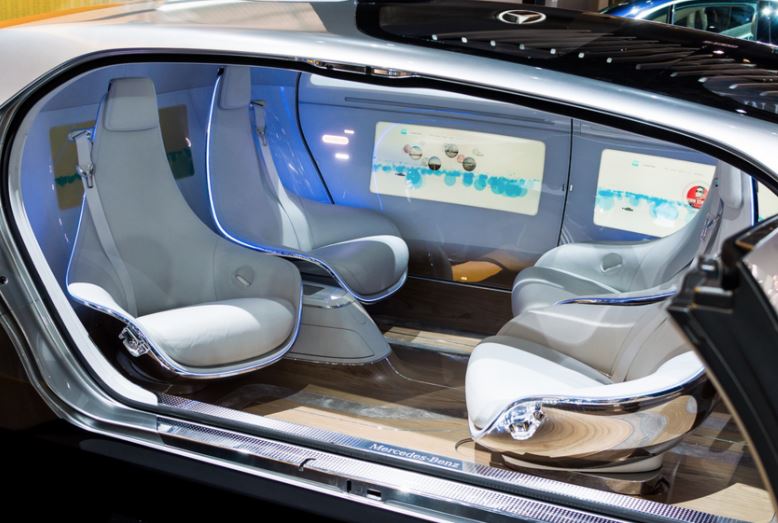
If you think our roads are currently jammed, wait until driverless vehicles decide to cruise around to avoid paying parking fees. In downtown areas of most major cities, parking fees are not cheap.
Even worse, while cruising, self-driving cars will slow to a crawl to get better mileage, says Adam Millard-Ball. Millard-Ball is an Associate Professor of Environmental Studies at the University of California, Santa Cruz.
Prof. Millard-Ball said:
“Parking prices are what get people out of their cars and on to public transit, but autonomous vehicles have no need to park at all. They can get around paying for parking by cruising. They will have every incentive to create havoc.”
Prof. Millard-Ball wrote about his analysis of driverless vehicles in the journal Transport Policy (citation below).
Robot-fueled gridlock coming as driverless vehicles ‘cruise’
We are approaching a robot-fueled gridlock scenario, Prof. Millard-Ball warned. Over the next two decades, autonomous vehicles will probably become commonplace.
Prof. Millard-Ball is the first person to analyze the combined impact of driverless vehicles in city centers and parking costs. Specifically, where parking availability is the only tool that restricts car travel effectively.
In a best-case scenario, just 2,000 driverless vehicles in downtown San Francisco would slow traffic to under 2 mph. This is what Prof. Millard-Ball calculated. He used game theory plus a traffic micro-simulation model. Game theory is a branch of math (UK: maths) concerned with the analysis of strategies we make for dealing with competitive situations.
Just a few vehicles on ‘cruise’ cause traffic jams
“It just takes a minority to gum things up,” he said, recalling the traffic jams that motorists cause while they cruise around the ‘Arrivals’ area of an airport to avoid parking fees. “Drivers would go as slowly as possible so they wouldn’t have to drive around again.”
Strict enforcement in loading areas plus free mobile phone parking areas relieved the airport congestion. However, cities will find it hard to provide driverless vehicles with relatively cheaper remote parking areas. Specifically, cheaper than it costs to cruise around.
Prof. Millard-Ball estimated that parking fees would need to be about $0.50 per hour.
Prof. Millard-Ball said:
“Even when you factor in electricity, depreciation, wear and tear, and maintenance, cruising costs about 50 cents an hour–that’s cheaper than parking even in a small town.”
“Unless it’s free or cheaper than cruising, why would anyone use a remote lot?”
The word ‘maintenance,’ in this context, refers to the money and time spent keeping a machine in working condition.
Introducing cruise regulations is not that simple. Let’s suppose the government introduces a law banning driverless vehicles from cruising for more than 10 minutes. ‘Cruising,’ in this context, means traveling with no passenger. What if the vehicle is picking up a package more than 10 minutes away?
The solution – a congestion charge
In London, for example, drivers must pay a flat fee of £11.50 (approx. $15) to circulate in the city center. Stockholm and Singapore have similar systems.
In a more sophisticated model, driverless vehicles that cruise might have to pay per mile. There could be higher or lower rates for specific streets.
Environmentalist and economists agree that congestion charges do reduce congestion. They also reduce air pollution levels. However, it is a politically risky strategy because commuters don’t like it. This is where Prof. Millard Bard sees an opportunity.

Now is the time to implement legislation
Prof. Millard-Ball explained:
“As a policy, congestion pricing is difficult to implement. The public never wants to pay for something they’ve historically gotten for free.”
“But no one owns an autonomous vehicle now, so there’s no constituency organized to oppose charging for the use of public streets. This is the time to establish the principle and use it to avoid the nightmarish scenario of total gridlock.”
Driverless vehicles could even be outfitted with special devices. The devices would give policymakers options for levying fees for different locations. They could also vary fees according to the time of day, speed, and even which lane the vehicle used.
Prof. Millard-Ball said:
“The fees could raise money for cities to improve transportation. The idea is to do it now before autonomous vehicles become widespread.”
Driverless vehicles
Driverless vehicles are vehicles that can circulate in traffic with no human input. In other words, there is no human driver. We also call them autonomous vehicles and self-driving vehicles.
They are able to perceive what is going on in their surroundings and travel to different locations through a combination of sensors, radar, and cameras. Engineers have also installed artificial intelligence (AI) in their software.
Artificial intelligence refers to software technologies that make machines think like humans. They also make them behave like humans. AI learns as it goes along, just like we do. We call this ability machine learning.
Citation
“The autonomous vehicle parking problem,” Adam Millard-Ball. Transport Policy, Volume 75, March 2019, Pages 99-108. DOI: https://doi.org/10.1016/j.tranpol.2019.01.003.
Video – Self-driving cars will cruise to avoid parking fees
In this UC Santa Cruz video, Prof. Millard-Ball talks about a future problem that autonomous vehicles will create.

